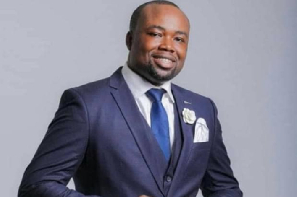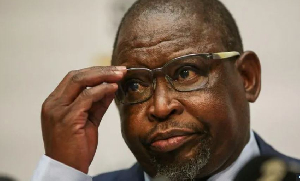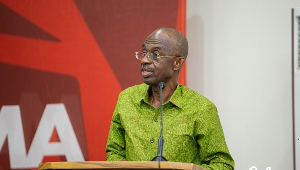The economic shock experienced by most economies caused by the novel Coronavirus (Covid-19) pandemic can have widespread and dramatic effect on investments in the energy sector.
The baseline expectation for 2020 is a widespread global recession caused by prolonged restrictions on mobility and social and economic activity. With a gradual opening up of economies currently under lockdown, the recovery is U-shaped and accompanied by a substantial permanent loss of economic activity.
Global gross domestic product (GDP) is assumed to decline by 6 percent in 2020, an outlook broadly consistent with the International Monetary Fund (IMF) longer outbreak case (IMF, 2020).
Across the world today challenges with global warming and environmental problems because of fossil waste is driving most economies to look at renewable energy. In most developing countries, renewable energy is becoming an important subject, especially those that depend heavily on foreign energy sources to confront continuously increasing energy demand since they need renewable energy to be able to achieve their goal of sustainable growth and do this without destructing the environment and by reducing their foreign dependency.
The effects on energy investment in this scenario come from two directions. First, spending cuts due to lower aggregate demand and reduced earnings; these cuts have been particularly severe in the oil industry where prices have collapsed. Second, the practical disruption to investment activity caused by lockdowns and restrictions on the movement of people and goods.
Most economies are utilizing public financing institutions to advance a green agenda and create jobs as they begin to plan their economic bounce back from the COVID-19 pandemic. Already some US states banks have provided loans and grants to fund carbon-cutting projects, such as community solar and energy efficiency retrofits. In April this year, New Jersey announced to set up a “Green Bank” by the end of the year to finance environmentally friendly infrastructure.
Opportunities for Banks in Ghana
In the early 90’s most of the banks across the world were unwilling to lend to renewable energy projects on a recourse basis due to unproven technologies, hesitant regulations, and lack of experience in renewable energy project financing on the part of the banks. The fact is little was known about renewable energy. So only a few project financings existed in the world and the ones that existed had a tendency to be undersized with margins and cost were rather high.
Times are changing as advancement in technology, political stability and economic improvements have provided the enabling environment for far wider market interest for project financing of renewable energy. For example, by the time the Europeans had adopted directives, banks had gained experiences lending to renewable energy projects in member states.
Today, as expectations have exceeded by the banks, renewable energy targets have gained extensive support. Banks have become more and more secured financing the renewable energy projects, so the numbers of the banks have been quadrupled over the years and long term bankable power contracts for developers to finance the projects that have been raised. This augmentation also has resulted in growing the size of projects brought to the market.
In Ghana, there have been attempts by the previous and current governments to create an enabling investment climate for renewable energy, introducing several policies and regulatory measures, including the renewable energy Act 2011 (Act 832). However, gaps within the existing renewable energy regulatory framework continue to slow down private investment in the sector.
It is only when government pays attention to straightening the regulatory framework that Commercial banks can become key change agents for project financing, in especially the renewable energy space. Depending on the type of project, Commercial banks in Ghana either can participate by a single lender, several lenders, or be syndicated.
Especially, for Ghana’s drive into the renewable energy space, investments can be channelled to construction loans and working capital loans, which among other commercial banks across the world, is one of the most common loans that are used. For example, in Early 2020, the Board of Directors of The African Development Bank (AfdB) approved a US$20 million investment in the Metier sustainable Capital International Fund II, which channels funds to renewable energy and resources – efficient infrastructure projects across Sub-Saharan Africa.
The Bank’s funding contributed to the production of an additional 178.5 megawatts (MW) of renewable power for commercial and residential use. It also created opportunities for industrial wastewater treatment and waste-to-energy generation.
The AfdB in 2018 approved a US$1.5 million grant from its sustainable energy fund for Africa (SEFA), to assist Ghana’s renewable energy investment drive. The grant supported efforts to overcome technical, financial, regulatory, and institutional barriers to scale-up renewable energy investments in the country.
The SEFA grant was to fund two broad components: the technical/commercial/regulatory and feasibility studies, aimed at providing detailed renewable energy resource studies, grid integration studies, and regulatory texts, and resources and public sector skills and capacity development.
In same 2018, Cal Bank received a US$30million loan facility from PROPARCO, to enable the bank to increase its capacity to meet the needs of the private sector, where a third of the amount was earmarked to finance renewable energy and energy efficiency projects. Not sure whether any stakeholder in the industry benefitted yet from the facility, however, two pilot projects that were eligible at that time were a solar plant project and an industrial energy efficiency project.
According to Cal Bank, that was the first of many financing operations for renewable energy and energy efficiency projects. In the context of the development of CAL’s activity, PROPARCO’s support could allow the bank to maintain 755 jobs and create an additional 60 percent of positions by 2022.
How Banks can easily participate
In a Bari Bahal Ozor article, “The Possible Way to Finance Renewable Energy Projects in terms of Project Finance & Law” he proposed four alternative types of bank credit facilities that might be arranged to finance a project.
The financing credit facility that can be applicable in the case of Ghana is revolving credit, term loan, standby letter of credit, or performance bond bridge loans. These credit facilities are familiar with most Commercial banks in Ghana and have the expertise to support the private sector or an international partner in the renewable energy sector.
Let me start-off with the revolving credit, which is a lawful promise on the part of a bank to enlarge credit up to the utmost amount for a definite term. As notes become due, the borrower can renew the notes, borrow a lesser quantity, or borrow quantity up to the specified maximum throughout the term of promise. Revolving credit agreements are for two years or longer and regarded as an intermediate loan.
Second, a term loan is a credit from a bank for a precise quantity that has a specified repayment plan and a floating interest rate and does not go beyond 10 years following completion of fundamental facilities, but longer repayment periods are possible when project economics are adequately compelling or the project is very long-lived. Amounts repaid according to a term loan cannot be re-borrowed.
Standby letter of credit (LC) is another type of bank credit that guarantees an obligation provided by a bank (the issuing bank) at the request and for the account of a bank client (the account party) and for the benefit of a third-party beneficiary (the beneficiary). It is to guarantee the payment or performance of an obligation assumed by the account party to the beneficiary in separate transactions.
This type of bank credit facility is normally used in project finance dealings as a credit enhancement to bear project participants’ contractual duties regarding a project and it’s financing. For example, standby letters of credit are usually used in project financing to guarantee the contractor’s obligations under EPC (engineering, procurement, and construction) contract.
The final being bridge loan, is a temporary financial support credits product that can be used by having a loan of firms to bridge the waiting time between receiving permanent financing. They have a briefer term than permanent loans. For that reason, a project that is perceived as very risky is a likely candidate for a bridge loan, using the bridge financing until it can prove its value and secure a long-term loan at a reasonable rate. Bridge loans are naturally extended on a floating rate basis until they are replaced by enduring or long-term financial support, which is frequently at a fixed-rate cost
The 2021 Budget Outlook
Ghana must be among the first countries in the sub region to introduce the concept of “Green Bank”. As already stated, some developed countries have established these banks with clear emphasis on supporting the development of green energy. Germany wants to lead the green recovery, and it is prepared to spend to get there.
As part of its US$145 billion recovery budge, the government has allocated some US$46 billion to sustainable investments in areas like renewable power and electric vehicles, according to Bloomberg. Note that petrol – and diesel-powered cars – a lucrative industry for Germany – get nothing. Meanwhile, an industry of the future, Green Hydrogen, stands to benefit from a US$9 billion boost.
While the EU has pledged to spend 25 percent of its budget on climate action, it is not yet clear exactly how much money would be earmarked for green industries. South Korea has also made sizeable green commitments, and many other nations are still working on their stimulus plans.
The Institute for Energy Security (IES) proposes that in the 2021 economic policy of government, there should be strong statement indicating Ghana’s resolve to go “Green” and fund the “Green revolution”. It is the understanding of IES that government might be unwilling to invest in renewable energy projects for several reasons, such as, difficulty with borrowing availability from international markets and the so-called excess capacity in the power sector. Maybe we can be also be thinking through by offering “Renewable Energy Bond”.
Opinions of Saturday, 1 August 2020
Columnist: Institute for Energy Security, IES



















